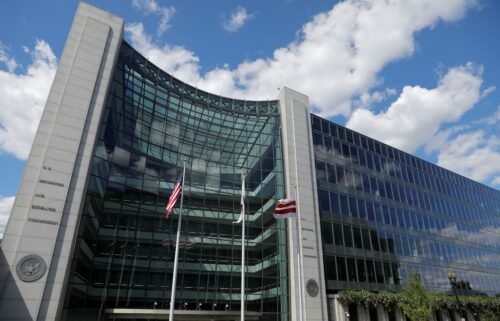Mortgage rates drop under 7% for the first time since August

US mortgage rates fell below 7% for the first time since mid-August.
Washington, DC (CNN) — Mortgage rates fell under 7% for the first time since mid-August this week. It is the seventh straight week that rates have dropped, as inflation improves and the Federal Reserve paused its rate increases.
With the Fed signaling in its most recent meeting that rate cuts may be coming in 2024, mortgage rates are expected to continue falling.
The 30-year fixed-rate mortgage rate fell to an average of 6.95% in the week ending December 14, down from 7.03% a week before, according to data from Freddie Mac released Thursday. A year ago, the average 30-year fixed-rate was 6.31%.
The average mortgage rate is based on mortgage applications that Freddie Mac receives from thousands of lenders across the country. The survey includes only borrowers who put 20% down and have excellent credit. A current buyer’s rate may be different.
“Potential homebuyers received welcome news this week as mortgage rates dropped below 7% for the first time since August,” Sam Khater, Freddie Mac’s chief economist said in a statement.
“Given inflation continues to decelerate and the Federal Reserve Board’s current expectations that they will lower the federal funds target rate next year, we likely will see a gradual thawing of the housing market in the new year,” Khater said.
The average rate rose above 7% in mid-August and reached as high as 7.79% at the end of October. Recent weeks of declining rates indicate the highest mortgage rates of this cycle may have passed. That’s welcome news for would-be buyers who have been facing the least affordable market since the 1980s.
Mortgage applications increased
Mortgage applications for the week ending December 8 increased from the week prior for the sixth consecutive week, according to the Mortgage Bankers Association.
Bob Broeksmit, MBA’s CEO, said the increase was a strong indication that borrower demand is rising as a result of the recent decline in mortgage rates.
“Lower mortgage rates are especially welcoming for prospective first-time buyers, who are still struggling to find available homes in their price range,” he said in a statement.
Homebuyers have been acting opportunistically, jumping on rates when they dip and making offers during this period between Thanksgiving and New Year’s, which is typically when the housing market slows to a crawl, said Lisa Sturtevant, Bright MLS’s chief economist.
But, even as rates dip heading into the new year, the market won’t heat up too fast due to stubbornly low inventory, she said.
“We often talk about how lower mortgage rates will bring more buyers into the market,” Sturtevant said in a statement. “But in this very unusual market, where inventory has been locked down, it is more important to watch how falling rates influence prospective sellers’ decisions.”
Nearly two-thirds of current mortgage holders carry an interest rate of 4% or lower, and more than 90% have rates 6% or lower, according to ICE Mortgage Technology, a mortgage data company. That means that even if rates come down to the mid-6% levels, motivating homeowners with ultra-low mortgage rates to sell will still be difficult.
This reluctance will keep inventory low, said Jiayi Xu, an economist at Realtor.com, in a statement, and buoy prices higher in the new year.
“The disparity between today’s higher market mortgage rates and the lower rates that existing homeowners benefit from on their current mortgages, commonly referred to as the lock-in effect, is expected to play a role in maintaining low inventory levels,” said Xu. “As home shoppers compete over the still-limited inventory, prices are expected to stay elevated, maintaining affordability as a top concern.”
The impact of the Fed’s pause and rate cut signal
Investors anticipated the Fed would keep its benchmark federal funds rate at the current rate during its December meeting this week. That expectation pushed down mortgage rates in tandem with falling 10-year Treasury yields.
While the Fed does not set the interest rates that borrowers pay on mortgages directly, its actions influence them. Mortgage rates track the yield on 10-year US Treasuries, which move based on anticipation about the Fed’s actions, what the Fed ends up doing and investors’ reactions. When Treasury yields go up, so do mortgage rates; when they go down, mortgage rates tend to follow.
“Despite the increase in job growth and the decrease in the unemployment rate in November, the overall trend indicates a slowdown in the labor market,” said Xu. “Additionally, the improved Consumer Price Index suggests that the Federal Reserve’s historic monetary tightening measures are effectively curbing inflation.”
The Fed also released its Summary of Economic Projections, which revealed a lower median expectation for the fed funds rate by the end of next year, now at 4.6%, down from 5.1% in its September forecast.
At a press conference on Wednesday, Fed Chair Jerome Powell said, “no one is declaring victory” over inflation just yet, but he admitted that officials are, at the very least, already discussing rate cuts in the new year.
The-CNN-Wire
™ & © 2023 Cable News Network, Inc., a Warner Bros. Discovery Company. All rights reserved.


